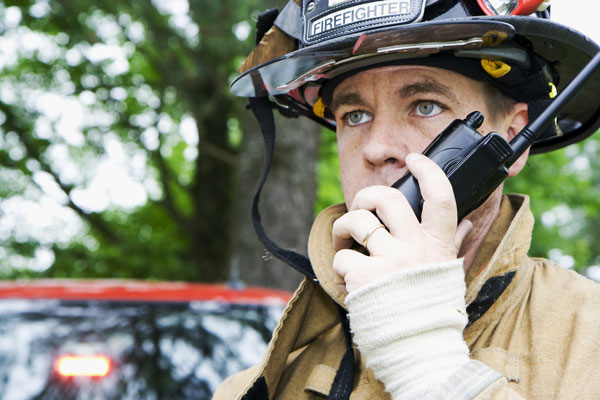
When an emergency service worker gets a call to tend to an injured party, they are often aware of the general risk they put themselves in. While some scenarios may put them in harm’s way, such as a disaster scene or a fire, carting away those in need should be straightforward. However, based on EMS assault statistics, emergency service professionals are no stranger to other types of dangerous situations.
The Centers for Disease Control and Prevention estimates an average of 2,600 EMS workers receive hospital treatment for injuries resulting from work-related violence. Whether it’s sustaining an assault injury from the party they are tending to or from the environment around them, such as from large crowds or those in a neighborhood, an EMS response team is susceptible to a unique type of danger.
Amid these realities, EMS agencies and individual EMS professionals are using or considering the purchase of a variety of solutions in order to mitigate risks for those in the field. Here’s a better look at how this is being pursued.
Understanding the Scope of the Problem
Every year, on average, more than one EMS professional in the United States is violently killed on duty. Match that note with nearly 2,500 workers being injured on the job–from contusions to taking punches to being slapped or hit with objects–being an EMS professional can be one of the most dangerous professions. In fact, the rate of violence related injuries with lost workdays for EMS personnel is more than 22 times higher than the national average for all workers.
What’s more, there’s a growing concern around the amount of injuries and assaults that female EMS workers sustain on any given day, shining a light on the need for not only protection and mitigation efforts, but education around the risks workers face on a given day.
Intervention Measures
There are a number of potential interventions that might cut down on the risk of assault-related injury among EMS personnel. They can include self-defense training, body cameras, weapons, chemical restraints, ballistic vests, pepper spray, and stun guns. But beyond the physical options, EMS personnel can also benefit from community education and de-escalation strategies and specific programs that help EMS workers escape violent encounters.
But these risk-reducing options do come with their own risks. For instance, ballistic vests may increase exposure to dangerous situations because vested personnel may go into a dangerous situation that they would haven’t entered without a vest. They can also increase the chance of hyperthermia.
Body cams, while helpful in keeping personnel accountable, may lead to a false sense of security. An unintended consequence may be that patients might end up becoming reluctant to confide in their providers when they are aware that information is being recorded.
While these prevention measures do come with their own risks, taking a step toward protection and safety is, in the very least, productive. Whether it’s tactics training to providing EMS workers with personal protective equipment, adding a layer of safety and supplementing it with education and support can help to raise awareness and potentially limit exposure moving forward.
About Provident Insurance Programs
With roots dating back to 1902, Provident Insurance Programs is a program administrator that serves paid and volunteer firefighters in addition to emergency medical responders with numerous custom-tailored insurance programs. We’ve also extended our expertise and experience to offer benefit plans and coverages to participant groups as well as Transportation Benefits. We are committed to continuing to provide superior customer service, and would be happy to speak with you to provide further information. Give us a call today at (855) 201-8880 to speak with one of our representatives.


